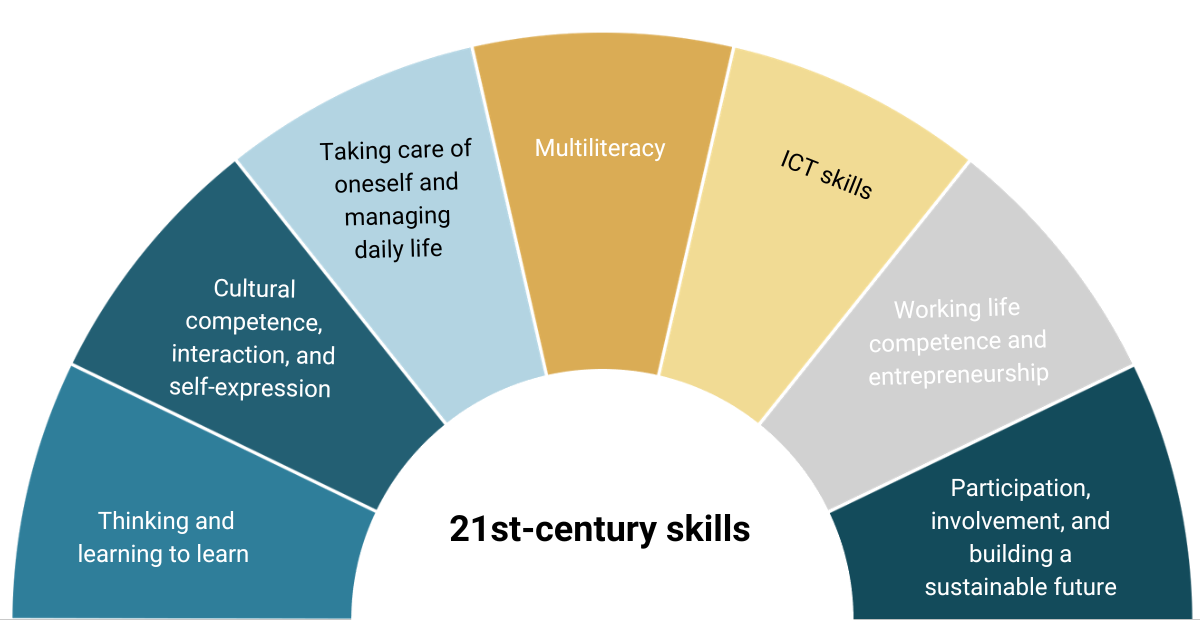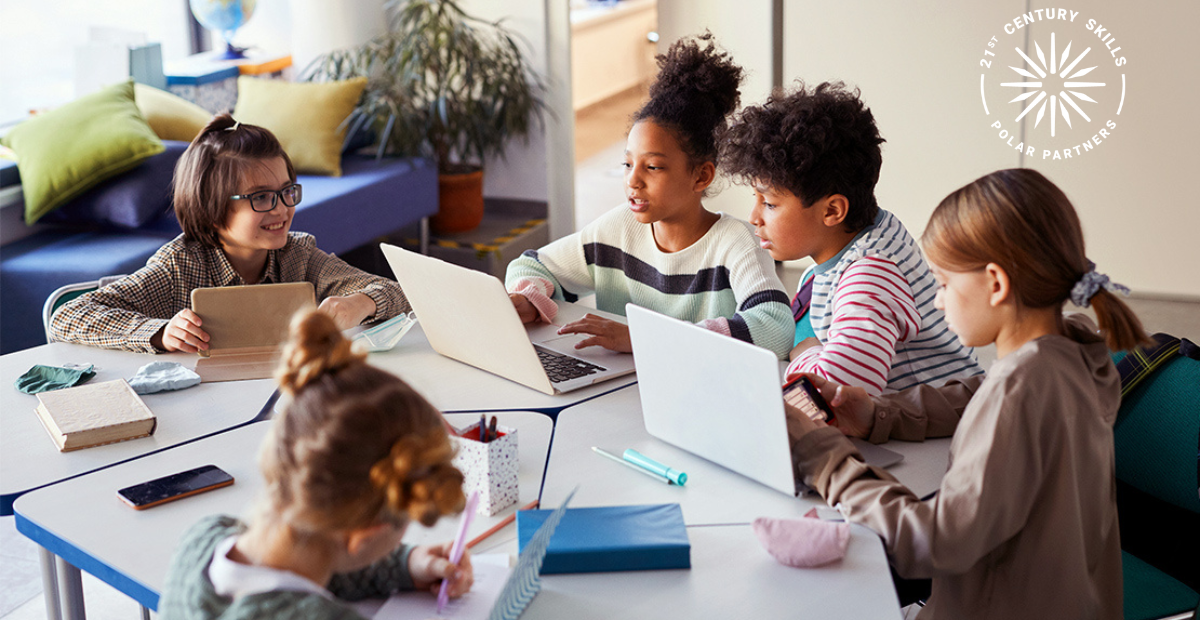A core principle of Finnish education model is to support students’ growth as individuals, enhance skills necessary for participating in tomorrow’s democratic society and make sustainable choices regardless of your age. This requires knowledge and competences that crosses boundaries and connects different fields of knowledge.
Finnish National Core Curriculum for Basic Education (2014) contains objectives, core content and evaluation criteria of all school subjects. It also introduces seven transversal competencies integrated into all subjects and school activities. These so-called 21st-century skills are tools that can be universally applied to enhance ways of thinking, learning, working and living in the world.
Our blog series will unlock the secrets of 21st-century skills:

21st-century skills – 1. Thinking and learning to learn
Education should nurture a student’s self-perception as an independent and impactful learner.
The ability to think and learn how to learn forms the groundwork for lifelong learning. This skill aims to support students in making observations, seeking, evaluating, editing, producing, and sharing ideas and information. Students need to have the courage to face unclear and conflicting information and to seek innovative answers.
Along with critical and creative thinking, education should nurture a student’s self-perception as an independent and impactful learner who can reflect and evaluate their learning: setting goals, picking their study methods, and managing their progress. They should also find joy in learning. For this to happen, teachers should be able to experiment, vary and adapt their teaching methods according to the different learning styles and needs when teaching these skills.
Creative thinking can be taught even during history classes. Instead of merely memorizing the names of historically significant people, students could learn on a deeper level by gaining an understanding of what made these people aspire to change the world, even if through fiction. It gives them room to discuss, analyze, make hypotheses and come up with their ideas.
While searching for new ways to apply skills and knowledge, students learn how to become independent and creative learners, listen to their inner voice, and reflect on their ideas, while learning how to reason their choices.
Constructive feedback works both ways
Studying within a sustainable learning community where knowledge is shared and co-created also ensures proper feedback development and helps students identify their strengths, habits, and learning strategies. When students analyze and visualize themselves as independent learners, it helps them create their study patterns.
The ability to give constructive feedback plays a vital role in a student’s self-perception. Students often receive feedback during learning but rarely write and share it themselves, even though it boosts the capability to access both personal and others’ progress. One way to incorporate a feedback practice into the curriculum is anonymous peer evaluation. That way students learn how to provide valuable comments and point out positive aspects as well as suggest improvements.
Therefore, teaching students critical thinking, self-realization and actualization develop a solid foundation for growth and lifelong learning.
This article is part of our series about 21st-century skills, a crucial theme in the future of education. Read about all the other transversal competencies soon in our blog.
